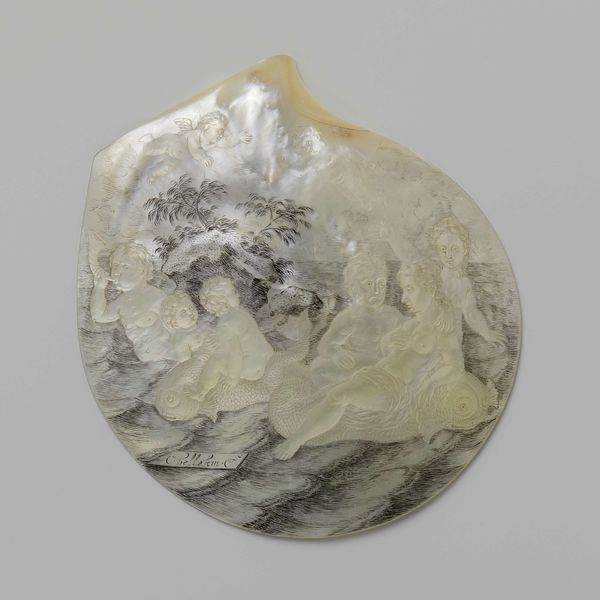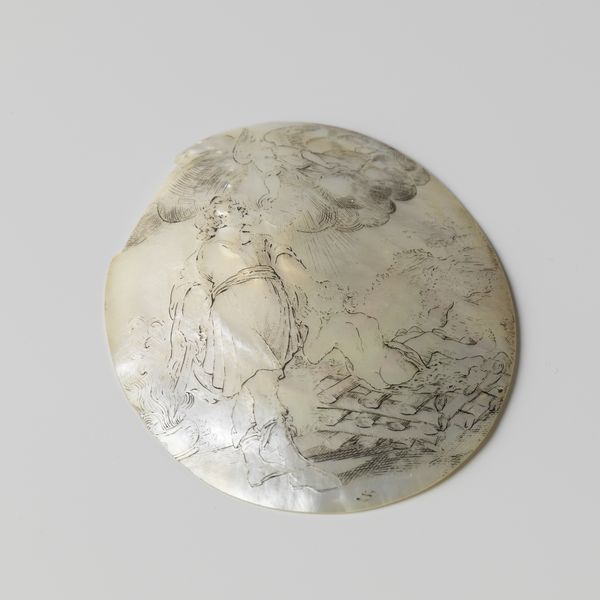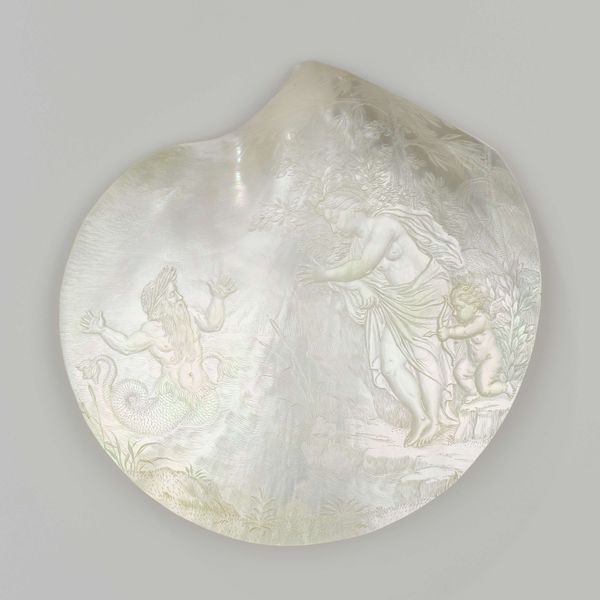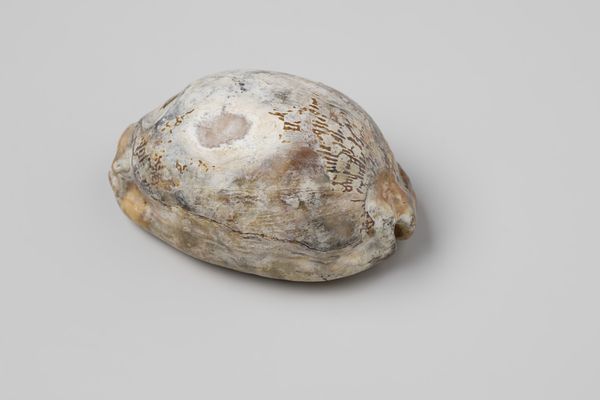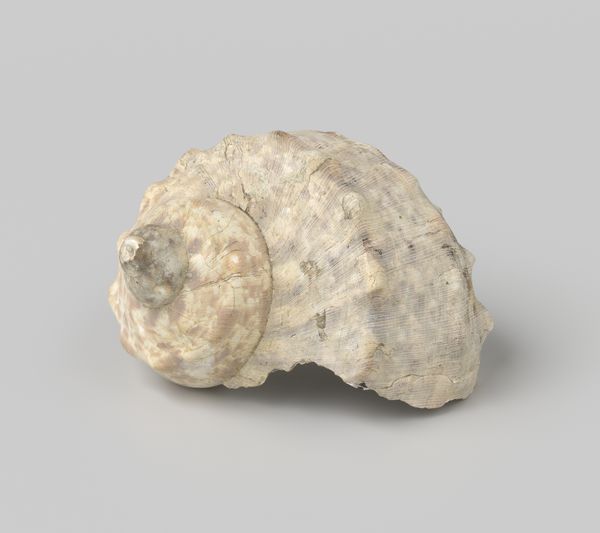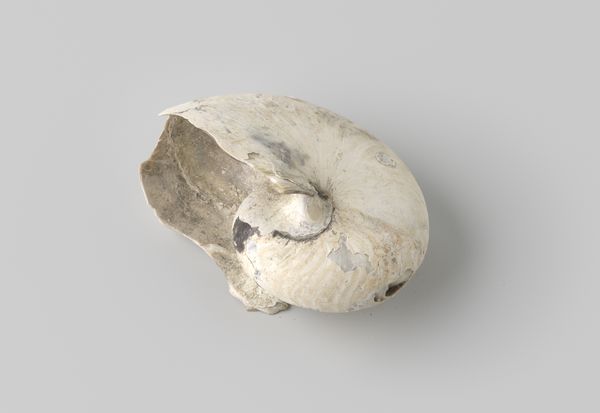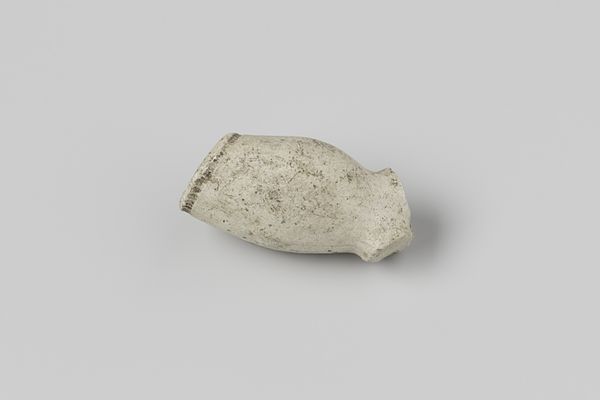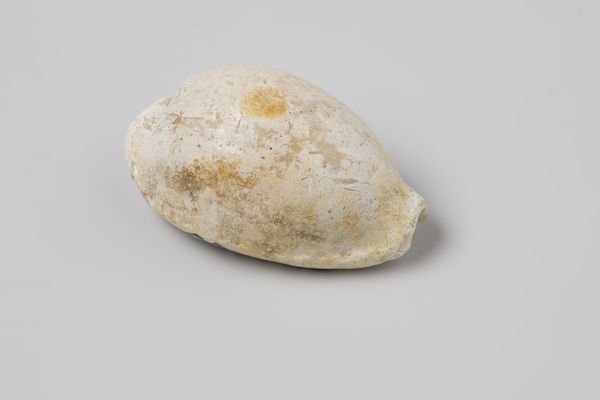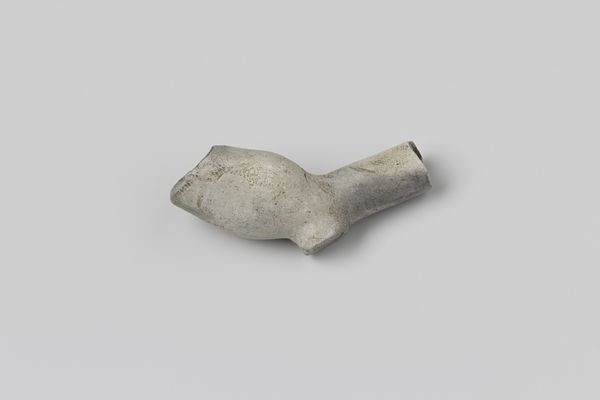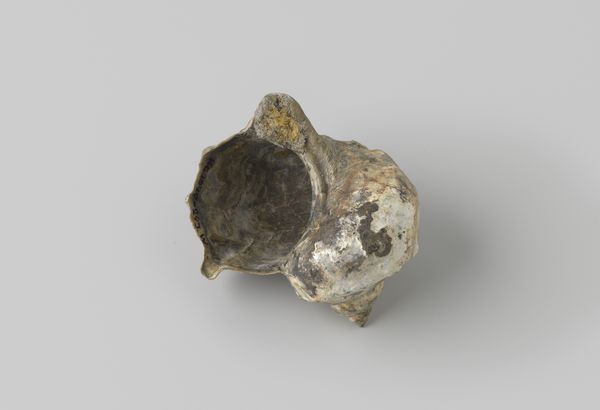
carving, sculpture
#
carving
#
baroque
#
sculpture
#
figuration
#
sculpture
#
genre-painting
Dimensions: height 9.2 cm, width 8.9 cm, depth 1.5 cm
Copyright: Rijks Museum: Open Domain
Curator: Here we have a remarkable example of Baroque carving: an oyster shell, dating from around 1700, meticulously worked by Cornelis Bellekin. Its official title is "Oesterschelp met zeefiguren, waaronder een vrouw op een rijdier"—Oyster shell with sea figures, including a woman on a mount. Editor: My goodness, what an enchanting scene! It's ethereal and almost ghostly. All these figures emerging from the pearlescent shell – are they riding dolphins, or some kind of fantastical sea creatures? It feels very dreamlike. Curator: Absolutely. Shell carving was quite the fashionable novelty during the Baroque period, appealing to wealthy patrons keen on displaying luxurious and exotic curiosities. Think of it as a cabinet of wonder shrunk into a single, transportable artwork. The very act of carving something so delicate, so ephemeral, would have spoken volumes about wealth and mastery. Editor: I'm immediately thinking about how these playful images interact with contemporary concepts of femininity. I mean, who is that central figure? Are we supposed to see her joyride as celebratory, or is it more of a power play? A claim to domain and mastery within this marine realm? Curator: That’s a brilliant question. Bellekin, of course, was working within a heavily codified symbolic language. Think of the popularity of marine mythology and allegorical themes featuring powerful female figures associated with the sea—think Amphitrite. I believe that looking at the work from a genre-painting perspective, we can start to imagine Bellekin was creating an intricate, sophisticated status symbol. Editor: Right, it's tempting to interpret the imagery as empowering—these confident female figures commanding mythical beasts. But we can't ignore the power dynamics at play within the cultural elite commissioning this artwork and the often obscured or subjugated labour producing it. It provokes essential conversations on identity, gender, and artistic representation. Curator: Indeed, and looking closely, it prompts me to consider not just who the intended audience was, but the complex power dynamics in both accessing the raw materials and finding the skilled artisans capable of executing such detailed craftsmanship. It's a material history interwoven with social hierarchies. Editor: This shell encapsulates such complexity. It's more than just pretty faces and frolicking figures; it's a small window into Baroque social and artistic norms. Thank you, that’s certainly enriched my understanding of this sculpture. Curator: Likewise, the perspective offered really opens my eyes, too. This really reveals what an oyster shell has to offer us beyond its shimmering surface.
Comments
No comments
Be the first to comment and join the conversation on the ultimate creative platform.
